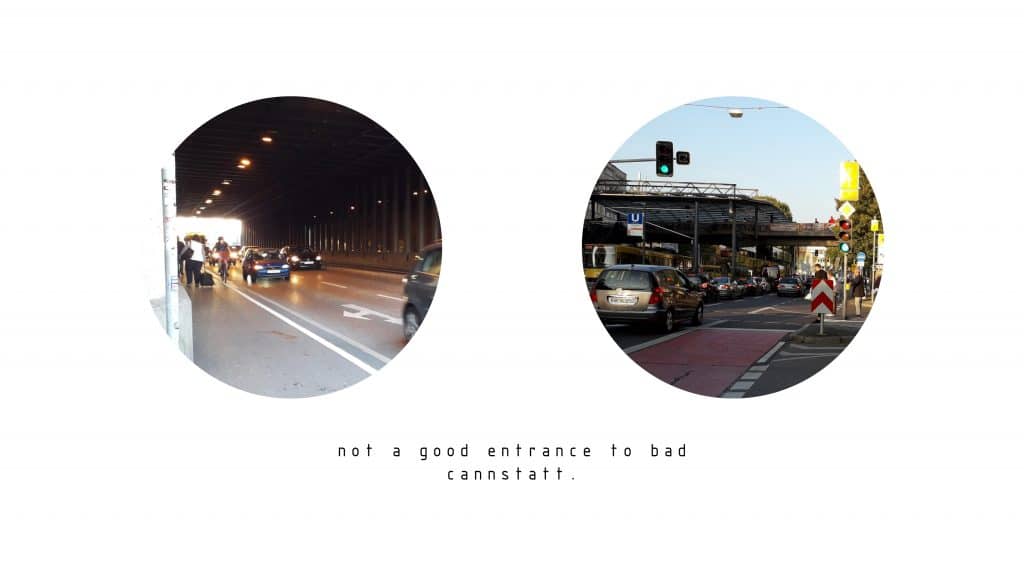Group B: Wilhelmsplatz Bad Cannstatt
The area around the Wilhelmsplatz in Bad Cannstatt is characterized by great diversity and enormous contrasts. Bustling business and vacancies, multiple options of private and public transportation, a historic town square and a shopping mall, fine restaurants and small takeaways are facing each other. The biggest and oldest municipality of Stuttgart is offering an overlap of different identities and atmospheres – from picturesque bathhouses to rough automobile industry. In addition, the district looks back on a long history of immigration in which it succeeded to unite different cultures. A heterogeneous population lives and works together in a heterogeneous city structure.
The question is how we can design an integrative community site in this complexity and thereby (re-) use existing synergies for the future of the city.
Wilhelmsplatz: multiple identities coming together on a common ground
The urban space is in a constant negotiation process between the individual, groups and society. In order to enable active democratic participation, we need places of exchange – places of collective, solidary and emancipatory participation. Instead of connecting the stakeholders, the Wilhelmsplatz seems to be more of a barrier between the old town and the train station, and due to the heavy traffic and the partly deserted buildings, the space for people is not very inviting. The student project therefore proposes to make new connections, to reorganize traffic underground, and to revitalize street-level businesses. A new Mobility Hub for Stuttgart and a Community Center for Bad Cannstatt complete the program on site and leave room for various activities and participants to use.

| Students: | |
| Niklas Kirstein | TU Wien |
| Ana Paula Gette | UBA FADU, Buenos Aires |
| Ignacio Javier González Núñez | UTFSM, Valparaiso |
| Wisdom Bwanali | Mzuzu University |
| Laura Gehring | HfWU Nürtingen |
| Tillmann Bollow | Universität Stuttgart |
| Teachers: | |
| Prof. Martina Baum | University of Stuttgart – Chair of Urban Planning and Design |
| Maria Schiller | University of Stuttgart – Chair of Urban Planning and Design |
| Alexander Richert | University of Stuttgart – Chair of Urban Planning and Design |
